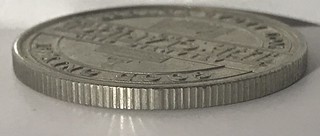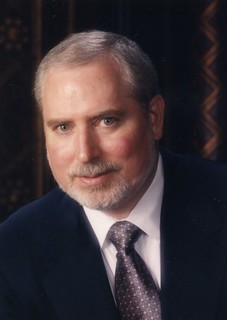
PREV ARTICLE
FULL ISSUE
PREV FULL ISSUE
LOOSE CHANGE: AUGUST 16, 2020Here are some additional items in the media this week that may be of interest. -Editor
U.S. Mint Colorization Contractor Revealed This is why the hobby needs to support real reporters at real subscription-based publications like Coin World (and not just rely on free internet newsletters like, well, The E-Sylum. Paul Gilkes published an article August 14, 2020 with the results of an investigation into the background of the U.S. Mint's coin colorization feature. Nice work! -Editor
The Mint contract, with a maximum potential value of $8,375,000 was awarded Oct. 9, 2019, to LulaRose, a division of The Clancy Group Corp. in Winchester, Massachusetts. The contract covers the colorization of specific design elements on the common reverse of the Proof 2020-S copper-nickel-clad half dollar struck at the San Francisco Mint and the Proof 2020-P silver dollar struck at the Philadelphia Mint.
To read the complete article, see:
Counterfeiter Louis “The Coin” Colavecchio An American Numismatic Society Pocket Change blog article by Jesse Kraft earlier this month discusses counterfeiter Louis “The Coin” Colavecchio. -Editor
This time, he was easy to prosecute. He had been bragging to an informant that he could effortlessly counterfeit $100 bills and was capable of besting even the latest security features. In December 2018, the Secret Service raided his home in Pawtucket, Rhode Island and found presses able to produce counterfeit bills that accurately simulated the real deal (including their distinct reaction to ultraviolet light), as well as 2,400 counterfeit $100 bills. Having the damning conversations on recording, he had no choice but to plead guilty. But, this wasn’t the first time he was ever caught.
To read the complete article, see:
To read an earlier E-Sylum article, see:
Jay M. Galst (1950-2020) Moving on the the good guys, here's a New York Times obituary for Jay Galst, who passed away in April. We'd covered this in our April 12, 2020 issue. -Editor This obituary is part of a series about people who have died in the coronavirus pandemic.
That boy grew up to be an ophthalmologist, and in a happy merging of vocation and avocation, he developed a passion for numismatics that included a singular area of expertise: He may have known more than anyone about coins, tokens, medals and similar artifacts that were in some way related to the eye. “The last time we were together, back in pre-pandemic February, we were in the A.N.S.’s vault looking through trays and trays of 17th-century British farthing and halfpenny tokens,” Dr. van Alfen said by email, “trying to find an example produced by a London optician who also produced a different token he had just purchased in order to compare the two. I knew very little about 17th-century British tokens before that morning. In the hour it took to find the token, I received a crash course. His pure joy in such numismatic arcana was always irresistible.”
To read the complete article, see:
To read the earlier E-Sylum article, see:
Sampling DNA From a 1,000-Year-Old Book While looking for other things I discovered this 2017 Atlantic article about a DNA analysis of the York Gospels. What tales our coin books could tell! -Editor

The York Gospels were assembled more than a thousand years ago. Bound in leather, illustrated, and illuminated, the book contains the four gospels of the Bible as well as land records and oaths taken by clergymen who read, rubbed, and kissed its pages over centuries. The Archbishops of York still swear their oaths on this book. The York Gospels are also, quite literally, a bunch of old cow and sheep skins. Skin has DNA, and DNA has its own story to tell. A group of archaeologists and geneticists in the United Kingdom have now analyzed the remarkably rich DNA reservoir of the York Gospels. They found DNA from humans who swore oaths on its pages and from bacteria likely originating on the hands and mouths of those humans. Best of all though, they found 1,000-year-old DNA from the cows and sheep whose skin became the parchment on which the book is written.
To read the complete article, see:
Wayne Homren, Editor The Numismatic Bibliomania Society is a non-profit organization promoting numismatic literature. See our web site at coinbooks.org. To submit items for publication in The E-Sylum, write to the Editor at this address: whomren@gmail.com To subscribe go to: https://my.binhost.com/lists/listinfo/esylum All Rights Reserved. NBS Home Page Contact the NBS webmaster 
|


